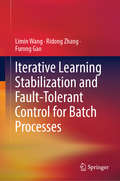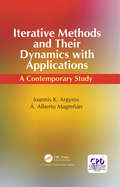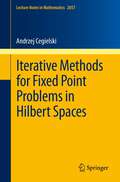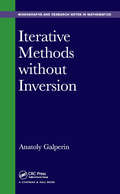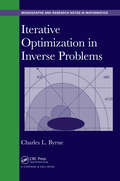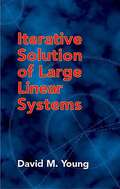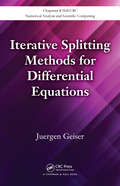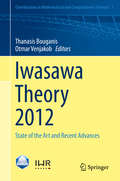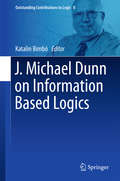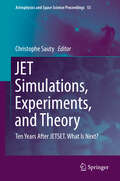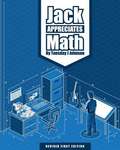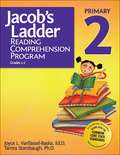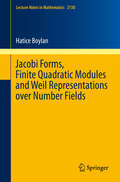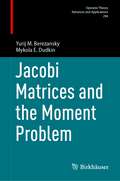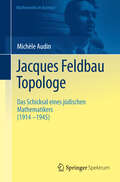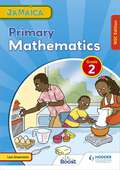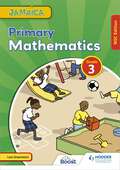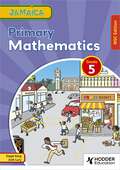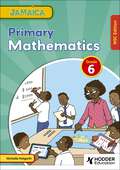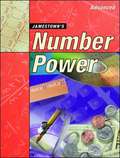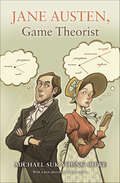- Table View
- List View
Iterative Learning Stabilization and Fault-Tolerant Control for Batch Processes
by Furong Gao Limin Wang Ridong ZhangThis book is based on the authors’ research on the stabilization and fault-tolerant control of batch processes, which are flourishing topics in the field of control system engineering. It introduces iterative learning control for linear/nonlinear single/multi-phase batch processes; iterative learning optimal guaranteed cost control; delay-dependent iterative learning control; and iterative learning fault-tolerant control for linear/nonlinear single/multi-phase batch processes. Providing important insights and useful methods and practical algorithms that can potentially be applied in batch process control and optimization, it is a valuable resource for researchers, scientists, and engineers in the field of process system engineering and control engineering.
Iterative Methods and Their Dynamics with Applications: A Contemporary Study
by Angel Alberto Magreñán Ioannis Konstantinos ArgyrosIterative processes are the tools used to generate sequences approximating solutions of equations describing real life problems. Intended for researchers in computational sciences and as a reference book for advanced computational method in nonlinear analysis, this book is a collection of the recent results on the convergence analysis of numerical algorithms in both finite-dimensional and infinite-dimensional spaces and presents several applications and connections with fixed point theory. It contains an abundant and updated bibliography and provides comparisons between various investigations made in recent years in the field of computational nonlinear analysis. The book also provides recent advancements in the study of iterative procedures and can be used as a source to obtain the proper method to use in order to solve a problem. The book assumes a basic background in Mathematical Statistics, Linear Algebra and Numerical Analysis and may be used as a self-study reference or as a supplementary text for an advanced course in Biosciences or Applied Sciences. Moreover, the newest techniques used to study the dynamics of iterative methods are described and used in the book and they are compared with the classical ones.
Iterative Methods for Fixed Point Problems in Hilbert Spaces
by Andrzej CegielskiIterative methods for finding fixed points of non-expansive operators in Hilbert spaces have been described in many publications. In this monograph we try to present the methods in a consolidated way. We introduce several classes of operators, examine their properties, define iterative methods generated by operators from these classes and present general convergence theorems. On this basis we discuss the conditions under which particular methods converge. A large part of the results presented in this monograph can be found in various forms in the literature (although several results presented here are new). We have tried, however, to show that the convergence of a large class of iteration methods follows from general properties of some classes of operators and from some general convergence theorems.
Iterative Methods without Inversion
by Anatoly GalperinIterative Methods without Inversion presents the iterative methods for solving operator equations f(x) = 0 in Banach and/or Hilbert spaces. It covers methods that do not require inversions of f (or solving linearized subproblems). The typical representatives of the class of methods discussed are Ulm’s and Broyden’s methods. Convergence analyses of the methods considered are based on Kantorovich’s majorization principle which avoids unnecessary simplifying assumptions like differentiability of the operator or solvability of the equation. These analyses are carried out under a more general assumption about degree of continuity of the operator than traditional Lipschitz continuity: regular continuity. Key Features The methods discussed are analyzed under the assumption of regular continuity of divided difference operator, which is more general and more flexible than the traditional Lipschitz continuity. An attention is given to criterions for comparison of merits of various methods and to the related concept of optimality of a method of certain class. Many publications on methods for solving nonlinear operator equations discuss methods that involve inversion of linearization of the operator, which task is highly problematic in infinite dimensions. Accessible for anyone with minimal exposure to nonlinear functional analysis.
Iterative Optimization in Inverse Problems (Chapman & Hall/CRC Monographs and Research Notes in Mathematics)
by Charles ByrneIterative Optimization in Inverse Problems brings together a number of important iterative algorithms for medical imaging, optimization, and statistical estimation. It incorporates recent work that has not appeared in other books and draws on the author's considerable research in the field, including his recently developed class of SUMMA algorithms
Iterative Solution of Large Linear Systems
by David M. YoungThis self-contained treatment offers a systematic development of the theory of iterative methods. Its focal point resides in an analysis of the convergence properties of the successive overrelaxation (SOR) method, as applied to a linear system with a consistently ordered matrix. The text explores the convergence properties of the SOR method and related techniques in terms of the spectral radii of the associated matrices as well as in terms of certain matrix norms. Contents include a review of matrix theory and general properties of iterative methods; SOR method and stationary modified SOR method for consistently ordered matrices; nonstationary methods; generalizations of SOR theory and variants of method; second-degree methods, alternating direction-implicit methods, and a comparison of methods. 1971 edition.
Iterative Splitting Methods for Differential Equations (Chapman & Hall/CRC Numerical Analysis and Scientific Computing Series)
by Juergen GeiserIterative Splitting Methods for Differential Equations explains how to solve evolution equations via novel iterative-based splitting methods that efficiently use computational and memory resources. It focuses on systems of parabolic and hyperbolic equations, including convection-diffusion-reaction equations, heat equations, and wave equations.In th
Iwasawa Theory 2012
by Thanasis Bouganis Otmar VenjakobThis is the fifth conference in a bi-annual series, following conferences in Besancon, Limoges, Irsee and Toronto. The meeting aims to bring together different strands of research in and closely related to the area of Iwasawa theory. During the week before the conference in a kind of summer school a series of preparatory lectures for young mathematicians was provided as an introduction to Iwasawa theory. Iwasawa theory is a modern and powerful branch of number theory and can be traced back to the Japanese mathematician Kenkichi Iwasawa, who introduced the systematic study of Z_p-extensions and p-adic L-functions, concentrating on the case of ideal class groups. Later this would be generalized to elliptic curves. Over the last few decades considerable progress has been made in automorphic Iwasawa theory, e. g. the proof of the Main Conjecture for GL(2) by Kato and Skinner & Urban. Techniques such as Hida's theory of p-adic modular forms and big Galois representations play a crucial part. Also a noncommutative Iwasawa theory of arbitrary p-adic Lie extensions has been developed. This volume aims to present a snapshot of the state of art of Iwasawa theory as of 2012. In particular it offers an introduction to Iwasawa theory (based on a preparatory course by Chris Wuthrich) and a survey of the proof of Skinner & Urban (based on a lecture course by Xin Wan).
J. Michael Dunn on Information Based Logics
by Katalin BimbóThis book celebrates and expands on J. Michael Dunn's work oninformational interpretations of logic. Dunn, in his Ph. D. thesis (1966),introduced a semantics for first-degree entailments utilizing the idea that asentence can provide positive or negative information about a topic, possiblysupplying both or neither. He later published a related interpretation of thelogic R-mingle, which turned out to be one of the first relational semanticsfor a relevance logic. An incompatibility relation between information stateslends itself to a definition of negation and it has figured into Dunn'scomprehensive investigations into representations of various negations. Theinformational view of semantics is also a prominent theme in Dunn's research onother logics, such as quantum logic and linear logic, and led to theencompassing theory of generalized Galois logics (or "gaggles"). Dunn's latest work addresses informational interpretations of the ternaryaccessibility relation and the very nature of information. The book opens withDunn's autobiography, followed by a list of his publications. It then presentsa series of papers written by respected logicians working on different aspectsof information-based logics. The topics covered include the logic R-mingle,which was introduced by Dunn, and its applications in mathematical reasoning aswell as its importance in obtaining results for other relevance logics. Thereare also interpretations of the accessibility relation in the semantics ofrelevance and other non-classical logics using different notions ofinformation. It also presents a collection of papers that develop semantics forvarious logics, including certain modal and many-valued logics. The publication of thisbook is well timed, since we are living in an "information age. " Providingnew technical findings, intellectual history and careful expositions ofintriguing ideas, it appeals to a wide audience of scholars and researchers.
JA. ECONOMICS
by Junior Achievement UsaA book that will help you develop your economic thinking and knowledge, As you progress through this course, you will see that economics is largely a way of thinking--about all kinds of things. Like learning to play a sport or a musical instrument, economic thinking is a skill that takes practice to develop.
JET Simulations, Experiments, and Theory: Ten Years After JETSET. What Is Next? (Astrophysics and Space Science Proceedings #55)
by Christophe SautyIn 2008, the European FP6 JETSET project ended. JETSET, for Jet, Simulations, Experiments, and Theory, was a joint research network of European expert teams on protostellar jets. The present proceedings are a collection of contributions presenting new results obtained by those groups since the end of the JETSET program. This is also the occasion to celebrate Kanaris Tsinganos’ important contributions to this network and for his enlightening insight in the subject that inspired us all. Some of the former JETSET students are now in the academic world and the subject has never been so alive. So we present here a collection of results of what has been done in the field of protostellar jets in the past ten years from the theoretical, numerical, observational and experimental point of view. We also present new challenges in the field of protostellar jets and what we should expect from the development of new instruments and new numerical codes in the near future. We also gather results on the impact of the study of protostellar jets on other jet studies in particular on relativistic jets. As a matter of fact, it is time for a new network.
Jack Appreciates Math
by Tuesday J. JohnsonThe book demonstrates how math is integrated into everything from personal finance, to nutrition and exercise, to scheduling. Calculating probability is linked to Powerball and Mega Millions. Modular arithmetic pops up in check digits, clocks and calendars, and personal data. <p><p> Students who think they don’t use or need math will gain a greater appreciation of the Fibonacci Sequence, the Golden ratio, and Hamiltonian circuits as they see how this “math stuff” can and does play a meaningful and important role in what they do and how they live. <p> Jack Appreciates Math is written for standard liberal arts math courses for non-majors. It can also be used in high school life skills courses or as a refresher for those who use math in everyday applications.
Jacob's Ladder Reading Comprehension Program: Primary 2
by Tamra Stambaugh Joyce L. VanTassel-BaskaJoyce L. VanTassel-Baska is Professor Emerita at The College of William and Mary, where she founded the Center for Gifted Education. Formerly she initiated and directed the Center for Talent Development at Northwestern University.
Jacobi Forms, Finite Quadratic Modules and Weil Representations over Number Fields
by Hatice BoylanThe new theory of Jacobi forms over totally real number fields introduced in this monograph is expected to give further insight into the arithmetic theory of Hilbert modular forms, its L-series, and into elliptic curves over number fields. This work is inspired by the classical theory of Jacobi forms over the rational numbers, which is an indispensable tool in the arithmetic theory of elliptic modular forms, elliptic curves, and in many other disciplines in mathematics and physics. Jacobi forms can be viewed as vector valued modular forms which take values in so-called Weil representations. Accordingly, the first two chapters develop the theory of finite quadratic modules and associated Weil representations over number fields. This part might also be interesting for those who are merely interested in the representation theory of Hilbert modular groups. One of the main applications is the complete classification of Jacobi forms of singular weight over an arbitrary totally real number field.
Jacobi Matrices and the Moment Problem (Operator Theory: Advances and Applications #294)
by Yurij M. Berezansky Mykola E. DudkinThis monograph presents the solution of the classical moment problem, the construction of Jacobi matrices and corresponding polynomials. The cases of strongly,trigonometric, complex and real two-dimensional moment problems are discussed, and the Jacobi-type matrices corresponding to the trigonometric moment problem are shown. The Berezansky theory of the expansion in generalized eigenvectors for corresponding set of commuting operators plays the key role in the proof of results.The book is recommended for researchers in fields of functional analysis, operator theory, mathematical physics, and engineers who deal with problems of coupled pendulums.
Jacobo, el constructor: Jack the Builder (Spanish Edition) (MathStart 1)
by Stuart J. Murphy“Kids, young and old, fall in love with math when they see how real-life and effortless it becomes thanks to these books.” —Kimberly D. Mueller, Ed.D., First Grade Teacher, Ashbrook School, Lumberton NJThis high-quality Spanish-language book can be enjoyed by fluent Spanish speakers as well as those learning the language, whether at home or in a classroom.The MathStart series has sold over 1.5 million copies and combines math with fun stories that have real-life applications. In Jacob el constructor, a Level One MathStart, Math becomes child's play as young readers are introduced to the skill of counting on, a first step toward mastering addition.Dos bloques . . . más tres son cinco bloques . . . ¡más diez son quince! ¿Qué puede crear un niño con su imaginación? Este cuento sobre bloques y construcción presenta la destreza matemática contar hacia adelante, un paso importante para dominar la suma.Math skills are life skills, and the MathStart series supports success!This award-winning series by Stuart J. Murphy teaches math through stories and visual models63 books divided into three levels with 21 books in eachFun activities kids will love are included to help parents and teachers emphasize the lessonsEngaging and relatable stories, with each story revolving around practical applications of the math concept presentedLively art from top-notch illustratorsCharts and other visual representations help children understand how the math works and promote deeper comprehensionMathStart's unique combination of stories, illustrations, and visual models helps teachers and parents in the teaching of math and provides all children with the opportunity to succeed.The math concepts taught in MathStart books conform to state and national standards. Level 1 is Pre-K–Kindergarten; Level 2 is Grades 1–3; Level 3 is Grades 2–4. The series follows math topics across grades so there is a foundational path to learning that runs through the levels.Help kids with their math skills plus their reading skills with the engaging and fun MathStart series!
Jacques Feldbau, Topologe
by Michèle AudinMit seinen Arbeiten über Faserbündel und Homotopiegruppen gehört Jacques Feldbau zu den Wegbereitern der modernen Topologie. Als elsässischer Jude in Clermond-Ferrand verhaftet, verstarb Feldbau zwei Wochen vor Ende des Zweiten Weltkrieges während der Deportation nach Auschwitz. Die Autorin zeichnet Leben und Werk des Mathematikers unter den Bedingungen des Nationalsozialismus und des Vichy-Regimes nach und präsentiert zahlreiche bisher unbekannte Fakten.
Jamaica Primary Mathematics Book 1 NSC Edition
by Lisa GreensteinMake maths fun, attainable and relevant with a series specifically designed for Jamaica's National Standard Curriculum by an expert team of authors in consultation with Jamaican educators.- Enter new topics with exciting chapter openers and Starting point activities to determine prior knowledge and learning readiness.- Develop analytical skills with features such as Problem solving and Real-life maths activities.- Provide a solid foundation for learning and PEP preparation at grades 4-6.- Consolidate learning at the beginning and end of each chapter with objectives and What I have learned activities.
Jamaica Primary Mathematics Book 2 NSC Edition
by Lisa GreensteinMake maths fun, attainable and relevant with a series specifically designed for Jamaica's National Standard Curriculum by an expert team of authors in consultation with Jamaican educators.- Enter new topics with exciting chapter openers and Starting point activities to determine prior knowledge and learning readiness.- Develop analytical skills with features such as Problem solving and Real-life maths activities.- Provide a solid foundation for learning and PEP preparation at grades 4-6.- Consolidate learning at the beginning and end of each chapter with objectives and What I have learned activities.
Jamaica Primary Mathematics Book 3 NSC Edition
by Lisa GreensteinMake maths fun, attainable and relevant with a series specifically designed for Jamaica's National Standard Curriculum by an expert team of authors in consultation with Jamaican educators.- Enter new topics with exciting chapter openers and Starting point activities to determine prior knowledge and learning readiness.- Develop analytical skills with features such as Problem solving and Real-life maths activities.- Provide a solid foundation for learning and PEP preparation at grades 4-6.- Consolidate learning at the beginning and end of each chapter with objectives and What I have learned activities.
Jamaica Primary Mathematics Book 4 NSC Edition
by Lisa Greenstein Jennifer Peek Kerry Saadien-RaadMake maths fun, attainable and relevant with a series specifically designed for Jamaica's National Standard Curriculum by an expert team of authors in consultation with Jamaican educators.- Enter new topics with exciting unit openers and Starting point activities to determine prior knowledge and learning readiness.- Develop analytical skills with features such as Maths detective and Real-world maths activities.- Provide a solid foundation for learning and PEP preparation at grades 4-6. - Consolidate learning at the beginning and end of each chapter with objectives and What I have learned activities, Practice questions and chapter Self-check reflection.
Jamaica Primary Mathematics Book 5 NSC Edition
by Steph King Josh LuryMake maths fun, attainable and relevant with a series specifically designed for Jamaica's National Standard Curriculum by an expert team of authors in consultation with Jamaican educators.- Enter new topics with an exciting unit/chapter opener and DIY prior knowledge activities to determine learning readiness.- Develop analytical skills with features such as Math detective and Real-world challenge.- Extend, support and evaluate learning while exploring alternative methodologies with Teacher tips and notes.- Provide a solid foundation for learning and PEP preparation at grades 4-6.- Consolidate learning with 'I can' objectives and DIY summary activities.
Jamaica Primary Mathematics Book 6 NSC Edition
by Lisa Greenstein Michelle HolgarthMake maths fun, attainable and relevant with a series specifically designed for Jamaica's National Standard Curriculum by an expert team of authors in consultation with Jamaican educators.- Enter new topics with an exciting unit/chapter opener and DIY prior knowledge activities to determine learning readiness.- Develop analytical skills with features such as Math detective and Real-world challenge.- Extend, support and evaluate learning while exploring alternative methodologies with Teacher tips and notes.- Provide a solid foundation for learning and PEP preparation at grades 4-6.- Consolidate learning with 'I can' objectives and DIY summary activities.
Jamestown's Number Power (Advanced)
by The Editors at the Jamestown PublishersThis book includes basic concepts about performing basic computations and plenty of practice with decimals, fractions, signed numbers, and ratio and proportion.
Jane Austen, Game Theorist: Updated Edition
by Michael Suk-Young ChweHow the works of Jane Austen show that game theory is present in all human behaviorGame theory—the study of how people make choices while interacting with others—is one of the most popular technical approaches in social science today. But as Michael Chwe reveals in his insightful new book, Jane Austen explored game theory's core ideas in her six novels roughly two hundred years ago—over a century before its mathematical development during the Cold War. Jane Austen, Game Theorist shows how this beloved writer theorized choice and preferences, prized strategic thinking, and analyzed why superiors are often strategically clueless about inferiors. Exploring a diverse range of literature and folktales, this book illustrates the wide relevance of game theory and how, fundamentally, we are all strategic thinkers.
